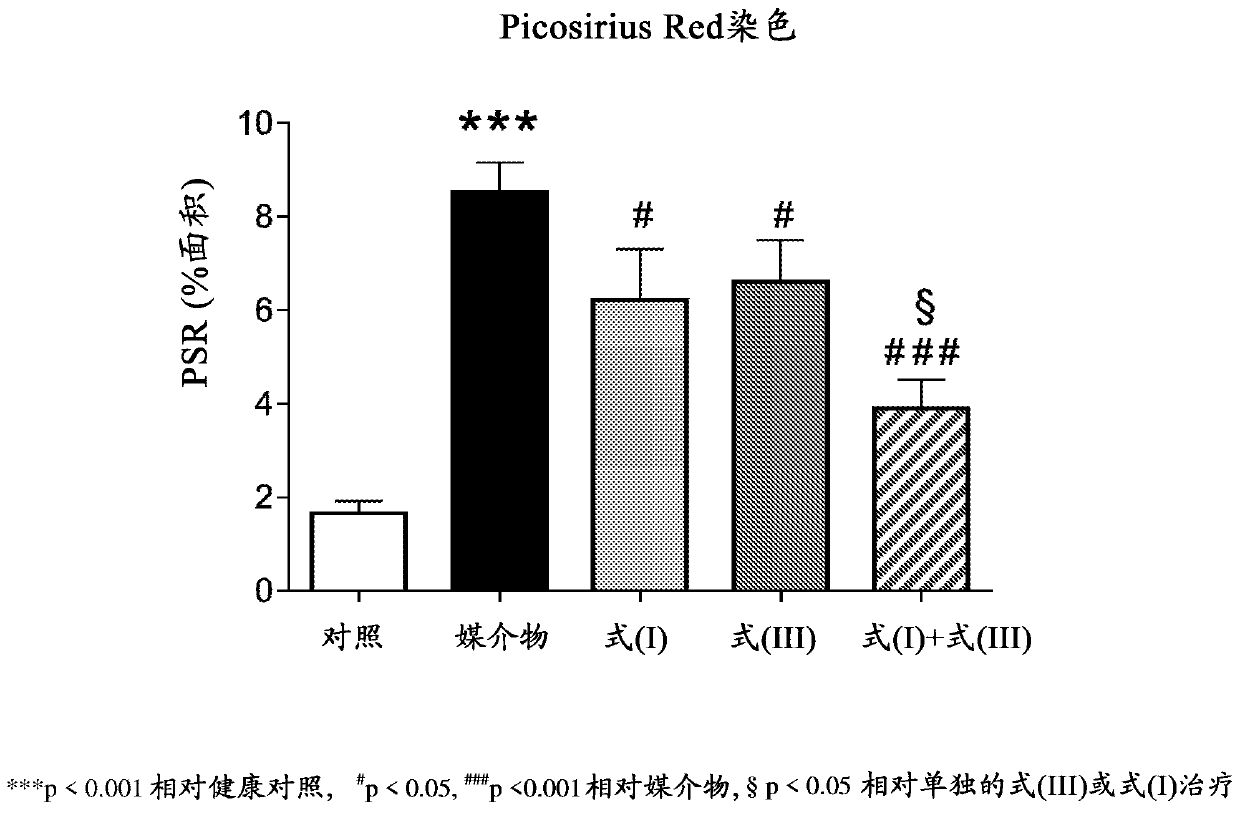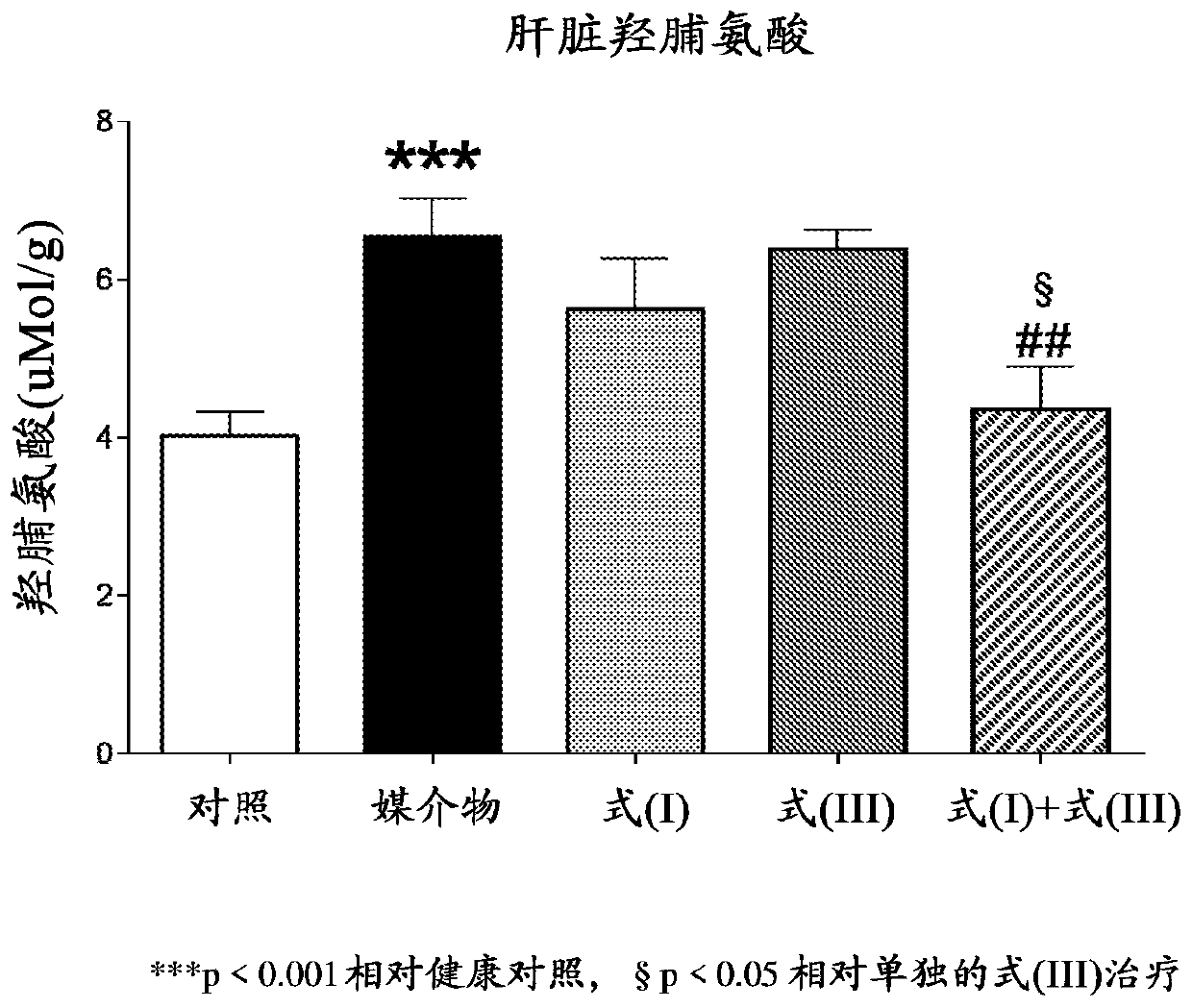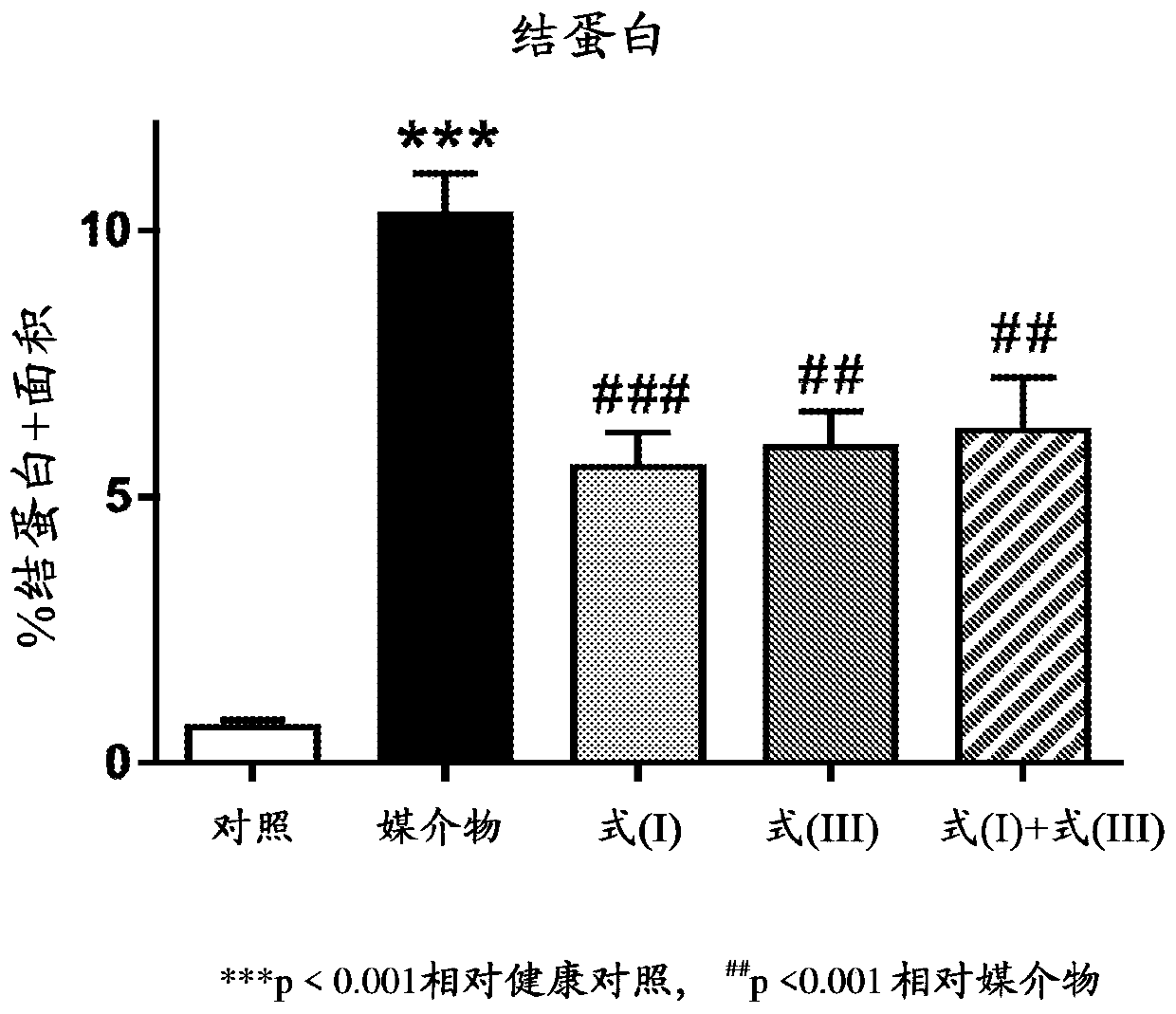Methods of treating liver disease
A liver disease, steatohepatitis technology, applied in the field of prevention and / or treatment of liver disease, can solve the problem of NAFLD drug treatment and other problems
- Summary
- Abstract
- Description
- Claims
- Application Information
AI Technical Summary
Problems solved by technology
Method used
Image
Examples
Embodiment 1
[0079] Example 1. Efficacy of the Rat NASH Model
[0080] The following study was performed to evaluate the efficacy of a combination of an ASK1 inhibitor and a FXR agonist in a rodent model of nonalcoholic steatohepatitis (NASH), relative to the efficacy of the agents alone in the model. By giving a choline-deficient high-fat diet (CDHFD) and chronically administering sodium nitrite (CDHFD / NaNO 2 ), to induce NASH in male Wistar rats. This model utilizes the "double-click theory" of NASH by inducing metabolic dysfunction (CDHFD) and oxidative stress (NaNO 2 ) lead to liver fibrosis with features and severity similar to those observed in patients with advanced NASH.
[0081] Rats were fed CDHFD for a total of 14 weeks and NaNO was administered from week 4 to week 14 2 . Compound of formula (III) (supplied as admixture in the diet adjusted to deliver 30 mg / kg / day), compound of formula (I) (administered as admixture in 0.2% of the diet) or vehicle at weeks 4 to 14 . The fo...
Embodiment 2
[0105] Example 2. Efficacy of NASH mouse model
[0106] The following study was performed to evaluate the efficacy of a combination of an ASK1 inhibitor and a FXR agonist in a mouse model of nonalcoholic steatohepatitis (NASH), relative to the efficacy of the individual agents alone in the model. NASH was induced in male C57BL / 6 mice by chronic administration of a "fast food" diet (FFD) rich in saturated fat, cholesterol and sugar for a total of 10 months, while lean control animals were maintained on normal chow. Establishment of a NASH phenotype for 7 months in FFD mice compared to control mice, characterized by obesity, hypercholesterolemia, and elevated AST / ALT; and histological features of NASH, such as macrovesicular fat in hepatocytes Degeneration and ballooning degeneration. See Charlton M et al. Fast food diet mouse: novel small animal model of NASH with ballooning, progressive fibrosis, and high physiological fidelity to the human condition. American journal of phys...
PUM
 Login to View More
Login to View More Abstract
Description
Claims
Application Information
 Login to View More
Login to View More - R&D
- Intellectual Property
- Life Sciences
- Materials
- Tech Scout
- Unparalleled Data Quality
- Higher Quality Content
- 60% Fewer Hallucinations
Browse by: Latest US Patents, China's latest patents, Technical Efficacy Thesaurus, Application Domain, Technology Topic, Popular Technical Reports.
© 2025 PatSnap. All rights reserved.Legal|Privacy policy|Modern Slavery Act Transparency Statement|Sitemap|About US| Contact US: help@patsnap.com



